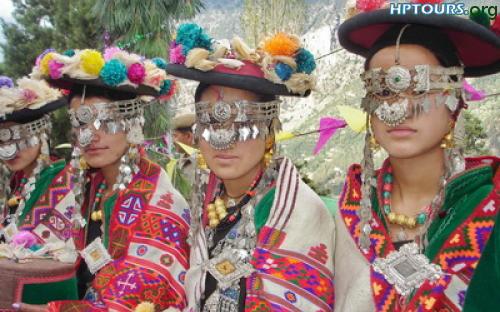Generally, Kinner houses have storerooms for keeping grain and dried fruits, and separate wooden grain-storage structures, called kathar. Pakpa, a piece of sheepskin or yakskin, is often placed on the khayarcha mat.
Traditionally Kinners use utensils made of brass and bronze. Modern influences have included the introduction of Chinese crockery, and utensils made of stainless steel and aluminium.
Clothes are mainly of wool. The thepang, a grey woollen cap, is worn with a white velvet band. The Tibetan chhuba, a long woollen coat
which resembles an achkan, is worn as well, with a sleeveless woollen jacket.While men wear woollen churidhar pajamas, and tailored woollen shirts such as the chamn kurti, the women wrap themselves up in a dohru. The first wrap of the dohru is based on the back, with embroidered borders displayed throughout its length, which stretches to the heels. Darker shades of colours are preferred for the Dohru, although other beautifully coloured shawls may be worn, usually draped over the shoulders. A choli, another type of full sleeved blouse worn by women, may serve as a decorative lining as well.
The Kinners are classified mainly into two castes: lower and upper caste. Again both of these categories are divided into sub classes. The caste system is more prevalent in the Lower and Middle Kinnaur regions--










Comment with Facebook Box